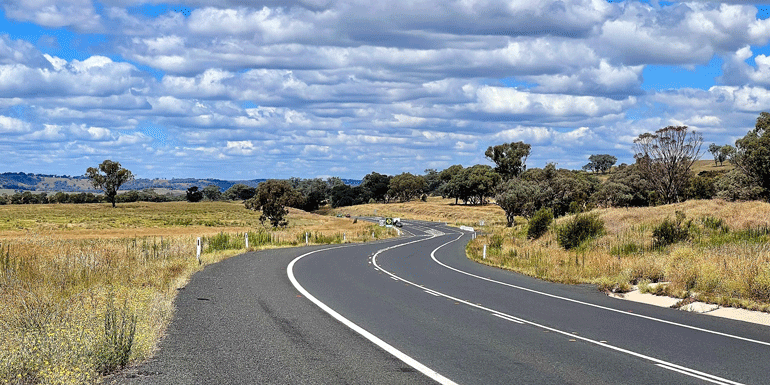Key points
- Bushfires can affect our lives, homes, economy and environment.
- NSW is at high risk of bushfire, and this risk is increasing with climate change.
- Increases in fuel load, fuel dryness, fire weather and lightning strikes are together likely to result in more frequent bushfires.
- The NSW Government is studying how bushfire risk and behaviour are changing in NSW, so that we can best adapt to limit their impact in the future.
Impacts of bushfires in NSW
Bushfires have always been a natural part of the Australian environment, and NSW is one of the most bushfire-prone regions of our country.
Bushfire events can have far-reaching impacts. These include loss of life, property and infrastructure. Bushfires can cause poor air quality, which can affect human and animal health, and can have long-lasting impacts to soil and water quality. Bushfires can also have devastating impacts on plants, animals and ecosystems.
For example, NSW experienced extensive bushfires in spring and summer 2019–20. Around 2500 homes were destroyed in the state, and it was estimated that at least 1 billion animals were killed in NSW and Victoria. Assessments show that fire affected the habitat of at least 293 threatened animals and 680 threatened plants.
How bushfires are affected by climate change in NSW
Climate change in NSW is having a significant effect on the predictability and length of the bushfire season. This presents new challenges in our ability to manage bushfires effectively.
Fire risk is affected by 4 main factors. When we try to understand the impacts of climate change on bushfires in NSW, we look at how climate change might affect these.
Fuel load is the amount of vegetation or other fuel that’s present in the landscape. A high fuel load means there is more vegetation available to burn.
Vegetation growth will be affected by the global increases in carbon dioxide that are driving climate change, as well as changes to rainfall patterns that are occurring with climate change. While there are indications that future fuel amounts will increase, we will need to monitor these changes and how they affect vegetation growth.
Dry fuel burns more easily than wet fuel. Understanding the dryness of the landscape helps to predict the likelihood of a bushfire occurring in that region.
Climate models are used to look at changes in humidity, temperature and rainfall to determine how fuel dryness may change. Climate models have predicted that NSW will experience warmer, drier periods of weather. These conditions will dry the vegetation, increasing the fuel dryness and bushfire risk.
Weather is a key driver of bushfire ignitions. The risk of fire is increased in ‘high fire weather’, which is a combination of low rainfall and humidity, and high temperatures and wind speeds.
To understand how fire weather conditions are changing, we look at historical records. There have been significant increases in the frequency of dangerous fire weather conditions across NSW since 1973.
Climate change projections have also been used to assess changes in future fire weather. These projections indicate that:
- severe fire weather will increase, mainly in summer and spring
- increasing fire weather conditions suggest that when fires do occur, they will be harder to control.
Lightning is the main natural ignition source of bushfires in NSW. Human behaviour – both accidental or deliberate – is also a major contributor to bushfires. While climate change does not affect human-caused ignitions, it is expected to increase instances of lightning strikes as extreme weather events become more frequent.
Adapting to bushfire in NSW
By understanding the role that climate change plays in bushfires, we can adapt to the changing nature of our bushfire seasons and take action to help safeguard our communities and protect our biodiversity.
Ongoing research is helping us to understand the complicated relationship between climate change and the four switches of bushfires. With continued data collection, we can create better models to predict the severity and length of future bushfires and adapt our fire management strategies.
Related information
Bushfires
Understanding fire weather - Australian Bureau of Meteorology
Understanding the effects of the 2019–20 fires - NSW Department of Planning and Environment
Climate change and bushfires
NSW Bushfire Risk Management Research Hub – University of Wollongong
Climate Council – Bushfires and climate change information hub
NSW Fire research – NSW Department of Planning and Environment
Managing bushfires
Fire - NSW National Parks
Firesticks – Indigenous cultural burning
NSW Rural Fire Service – Planning for bushfire protection
Resilience NSW – Bushfire recovery assistance
Service NSW – Bushfire Customer Care Service
Bushfire-Resilient Homes Toolkit Residents Guide (2021) - Canberra Region Joint Organisation
Bushfire-Resilient Homes Toolkit Council Guide (20121) - Canberra Region Joint Organisation
Bushfire-Resilient Homes Toolkit Industry Report (2021) - Canberra Region Joint Organisation
Case studies

NSW councils are building climate risk into their business-as-usual planning and policies for the first time, thanks to products developed using NARCliM’s locally relevant climate modelled data.

The CRJO and its partners created the Bushfire-Resilient Housing Toolkit to reframe bushfire risk to help prepare and build more resilient communities.
Brunswick Valley Landcare have developed a climate resilient landscapes guide to give the Northern Rivers tools to adapt to the impact of climate change.
